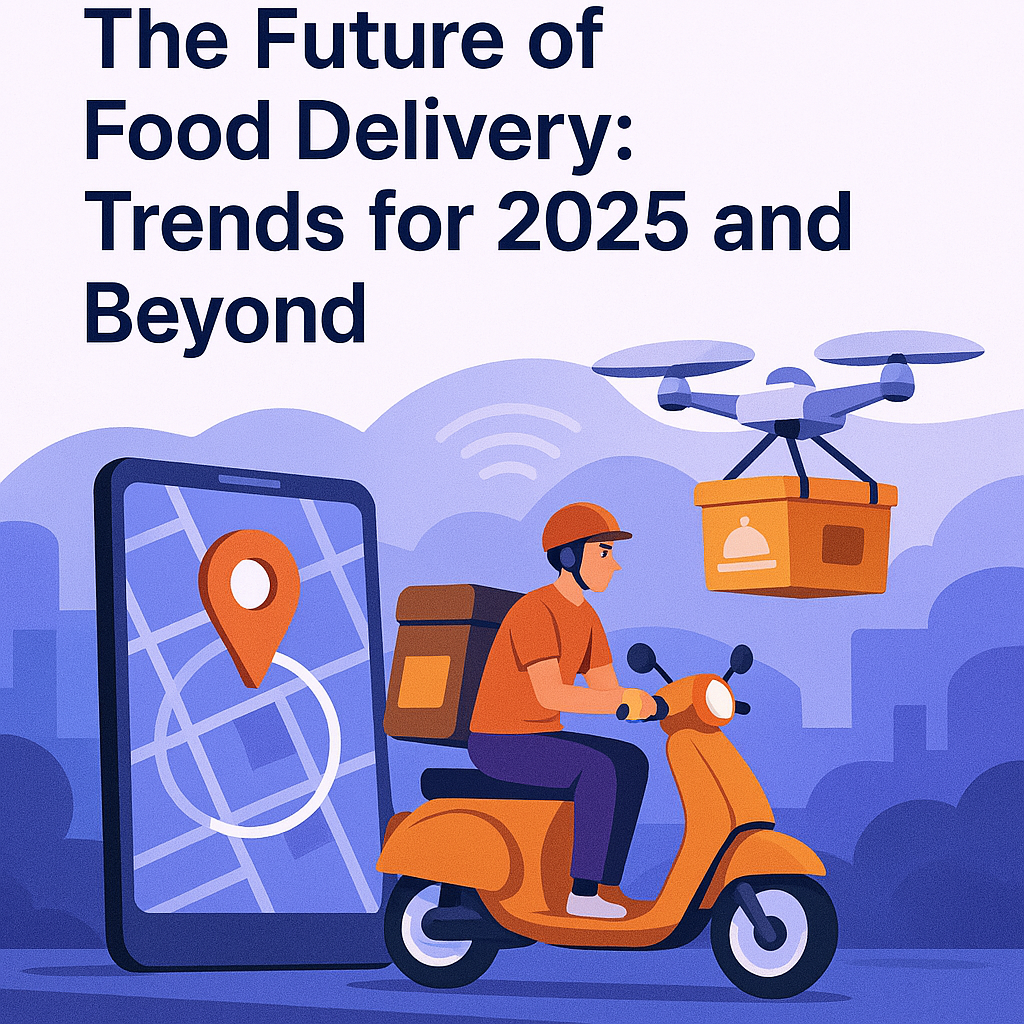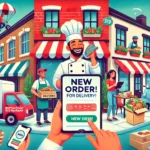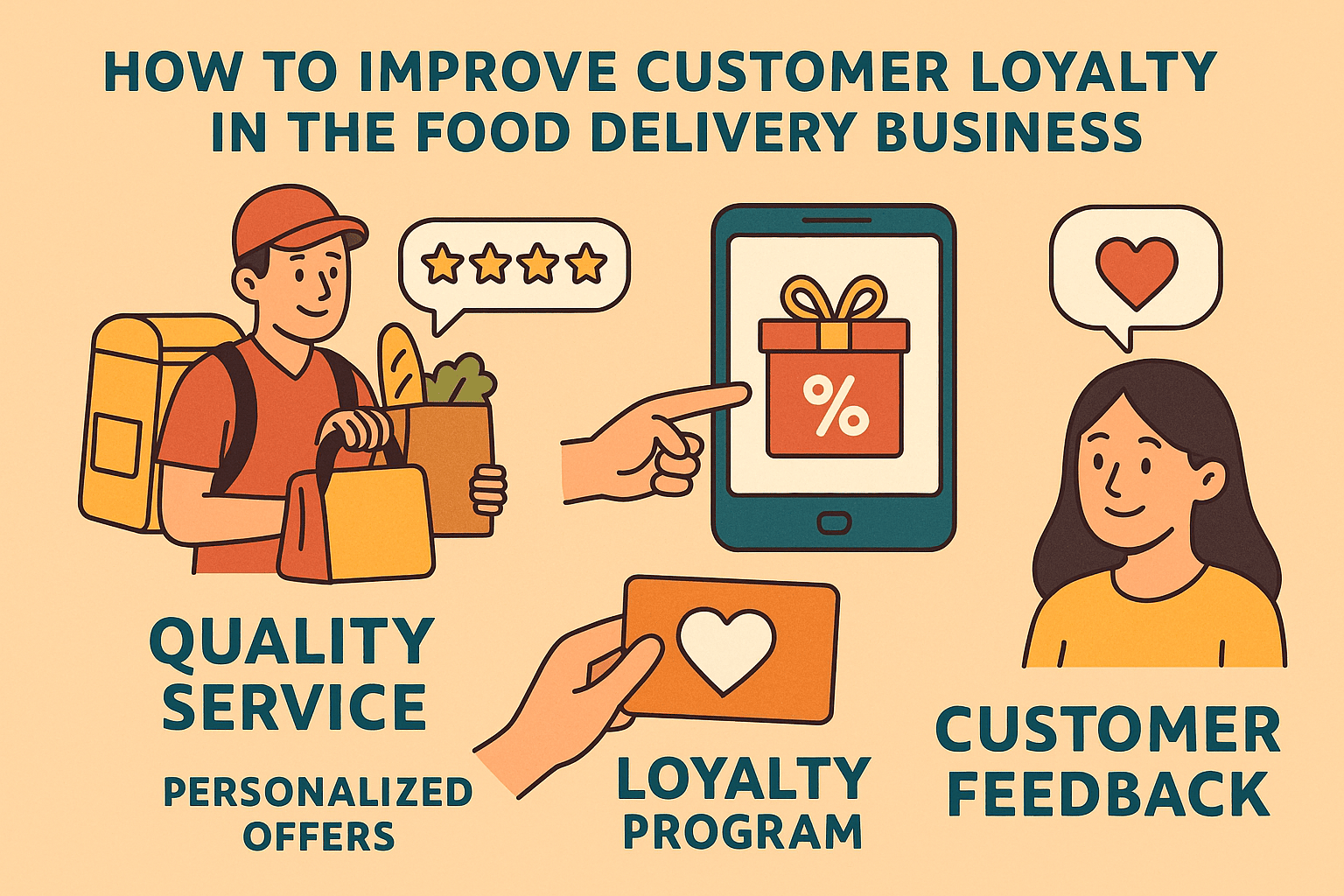Food delivery has transformed significantly over the past decade, moving from the traditional takeaway model to a tech-driven, convenience-focused industry. As we step into 2025 and beyond, the landscape of food delivery is set to evolve even further, shaped by technological advancements, changing consumer behaviours, and new business models. In this deep dive, we explore the key trends that will define the future of food delivery and what businesses and consumers can expect in the coming years.
1. Hyper-Personalisation and AI-Powered Recommendations
One of the biggest trends shaping food delivery is hyper-personalisation. With artificial intelligence (AI) and machine learning becoming more sophisticated, food delivery platforms can now predict what customers want before they even know it themselves. AI-driven recommendations based on past orders, dietary preferences, time of day, and even mood analysis will become standard features, ensuring that customers receive curated suggestions tailored to their individual tastes.
How This Benefits Customers
- Faster and easier ordering
- More relevant meal choices
- Improved satisfaction with tailored recommendations
Impact on Businesses
- Increased order frequency
- Better customer retention
- More opportunities for upselling and cross-selling
2. Sustainability and Eco-Friendly Packaging
Sustainability is no longer an afterthought—it’s a necessity. As consumers become more environmentally conscious, they demand greener choices from food delivery services. Expect to see an increase in compostable packaging, reusable container schemes, and even carbon-neutral delivery options.
Sustainability Trends to Watch
- Edible packaging and biodegradable materials
- Zero-emission delivery fleets using electric bikes and scooters
- Carbon offset programs for deliveries
- More plant-based and locally sourced meal options
3. Drone and Autonomous Vehicle Deliveries
Faster, safer, and more efficient deliveries are the future. Companies are investing heavily in autonomous delivery solutions, from drones dropping off orders in minutes to self-driving robots navigating busy city streets.
Why This Matters
- Reduces reliance on human couriers, addressing labour shortages
- Faster deliveries, especially in congested urban areas
- Lower costs for businesses in the long run
While regulatory hurdles still exist, advancements in this area mean it won’t be long before seeing a delivery drone in the sky becomes a common sight.
4. Ghost Kitchens and Virtual Brands
The rise of ghost kitchens (also known as dark kitchens or cloud kitchens) has revolutionised food delivery. These are professional kitchens set up purely for fulfilling online orders, with no physical restaurant space for dine-in customers. The next phase will see even more growth in virtual restaurant brands—concepts designed solely for delivery, operating from ghost kitchens.
Key Advantages
- Lower overhead costs for businesses
- Faster expansion into new locations
- Greater variety of food choices for consumers
5. Subscription and Loyalty Programmes
Much like how streaming services offer subscription models, food delivery is moving in the same direction. Companies are rolling out subscription plans where customers pay a monthly fee for unlimited free deliveries or exclusive discounts.
How This Benefits Customers
- Saves money on frequent orders
- Encourages brand loyalty
- Unlocks personalised rewards and perks
6. Integration with Smart Home Devices
Voice-activated ordering through smart speakers like Amazon Alexa and Google Home is set to become more mainstream. Imagine simply saying, “Order my usual Friday night pizza,” and having it arrive at your door without lifting a finger.
Other Smart Home Innovations
- Smart fridges that suggest meal deliveries based on inventory
- AI-powered meal planners integrated with delivery apps
- Automated reorder functions based on past behaviour
7. Health and Nutrition-Focused Offerings
With increased awareness around health and nutrition, food delivery platforms are expanding their options to cater to dietary preferences and wellness-focused lifestyles.
What to Expect
- More calorie-conscious meal choices
- AI-driven nutritional insights and meal planning
- Expansion of diet-specific menus (keto, vegan, gluten-free, etc.)
8. Faster Delivery Times with Predictive Ordering
Thanks to predictive analytics, food delivery services will become even faster. Instead of waiting for customers to place orders, AI will anticipate popular choices and pre-position meals at strategic locations for rapid dispatch.
The Benefits
- Reduced waiting times
- More efficient operations
- Improved customer satisfaction
9. Community-Focused Delivery Networks
As local food movements grow, there’s an increasing push for community-based delivery networks. These will support independent businesses, connecting customers with local producers and restaurants.
Key Aspects
- Direct farm-to-table delivery services
- Local cooperatives pooling resources for deliveries
- Support for small, independent restaurants
10. Cryptocurrency and Alternative Payment Methods
The way we pay for food delivery is also changing. Cryptocurrency, digital wallets, and even buy-now-pay-later (BNPL) options are becoming more widely accepted.
Payment Innovations to Watch
- Bitcoin and Ethereum payment options
- Digital wallets like Apple Pay and Google Pay becoming the norm
- BNPL schemes allowing customers to split payments
Final Thoughts: The Future is Fast, Smart, and Sustainable
The food delivery industry is on the brink of another major transformation, driven by AI, sustainability, automation, and evolving consumer expectations. As we move into 2025 and beyond, businesses that adapt to these trends will thrive, while those that resist change risk being left behind.
Whether you’re a food business owner, a delivery service provider, or simply someone who loves a good takeaway, these innovations will shape the way we experience food delivery in the coming years. The future is exciting, and it’s arriving faster than ever!


